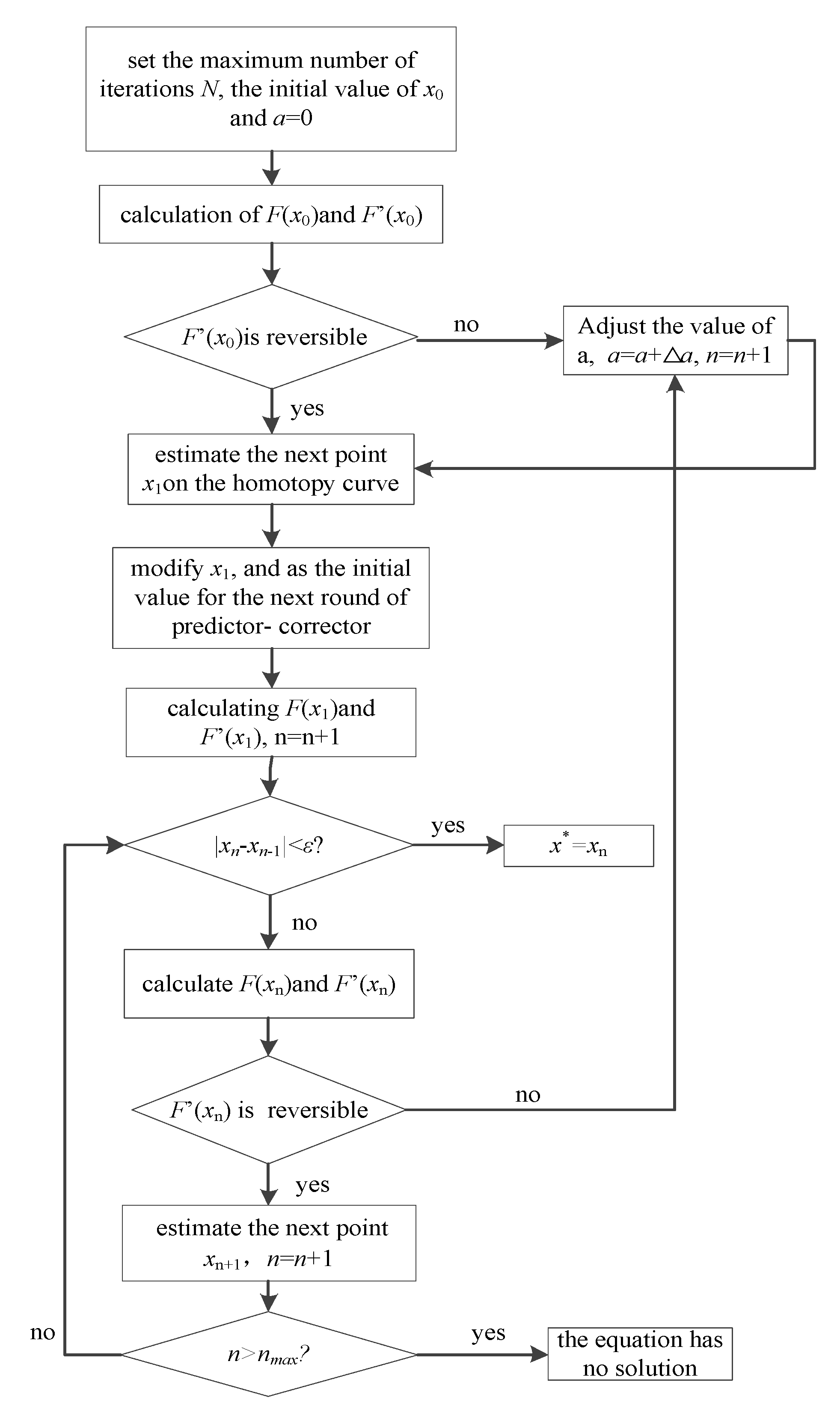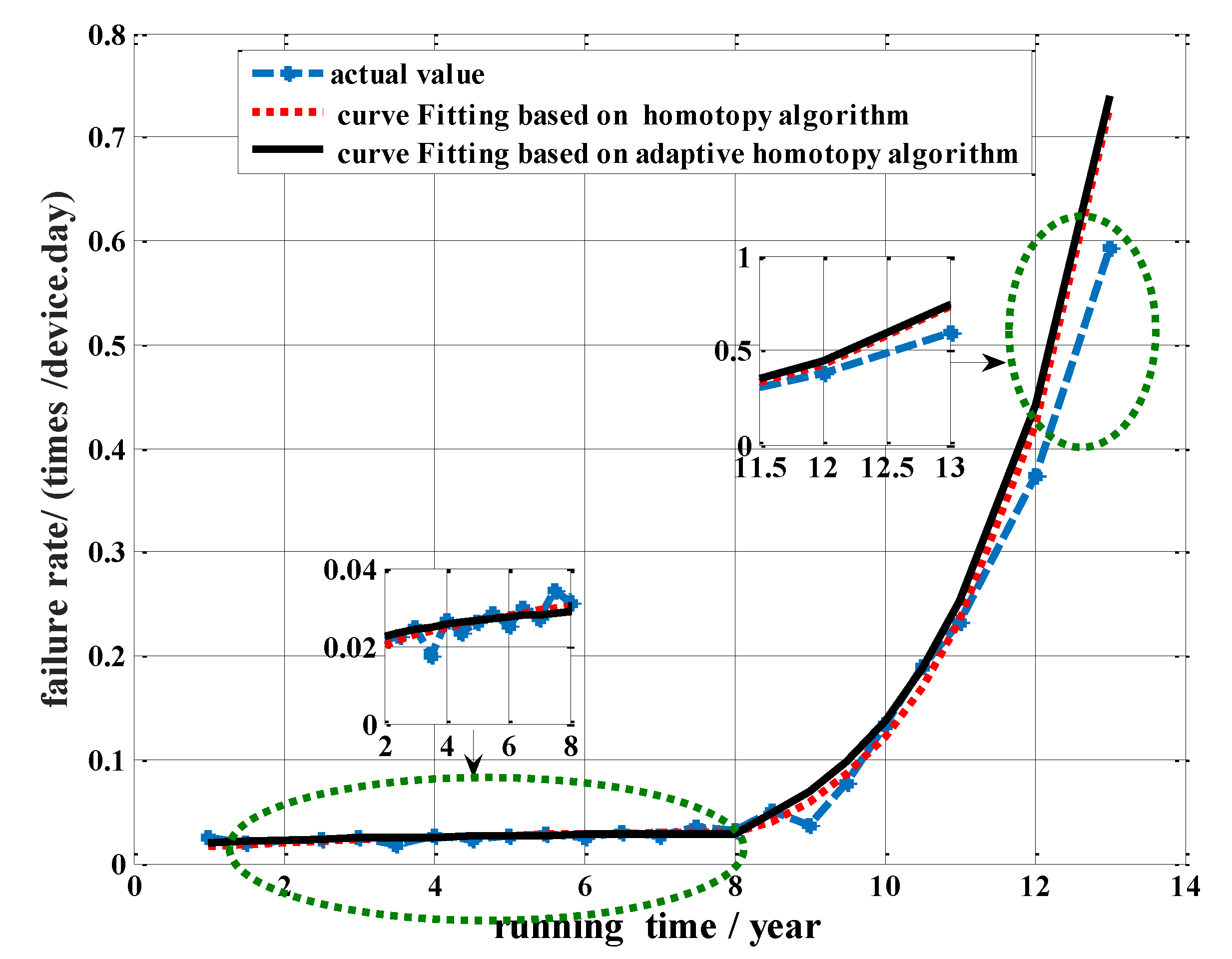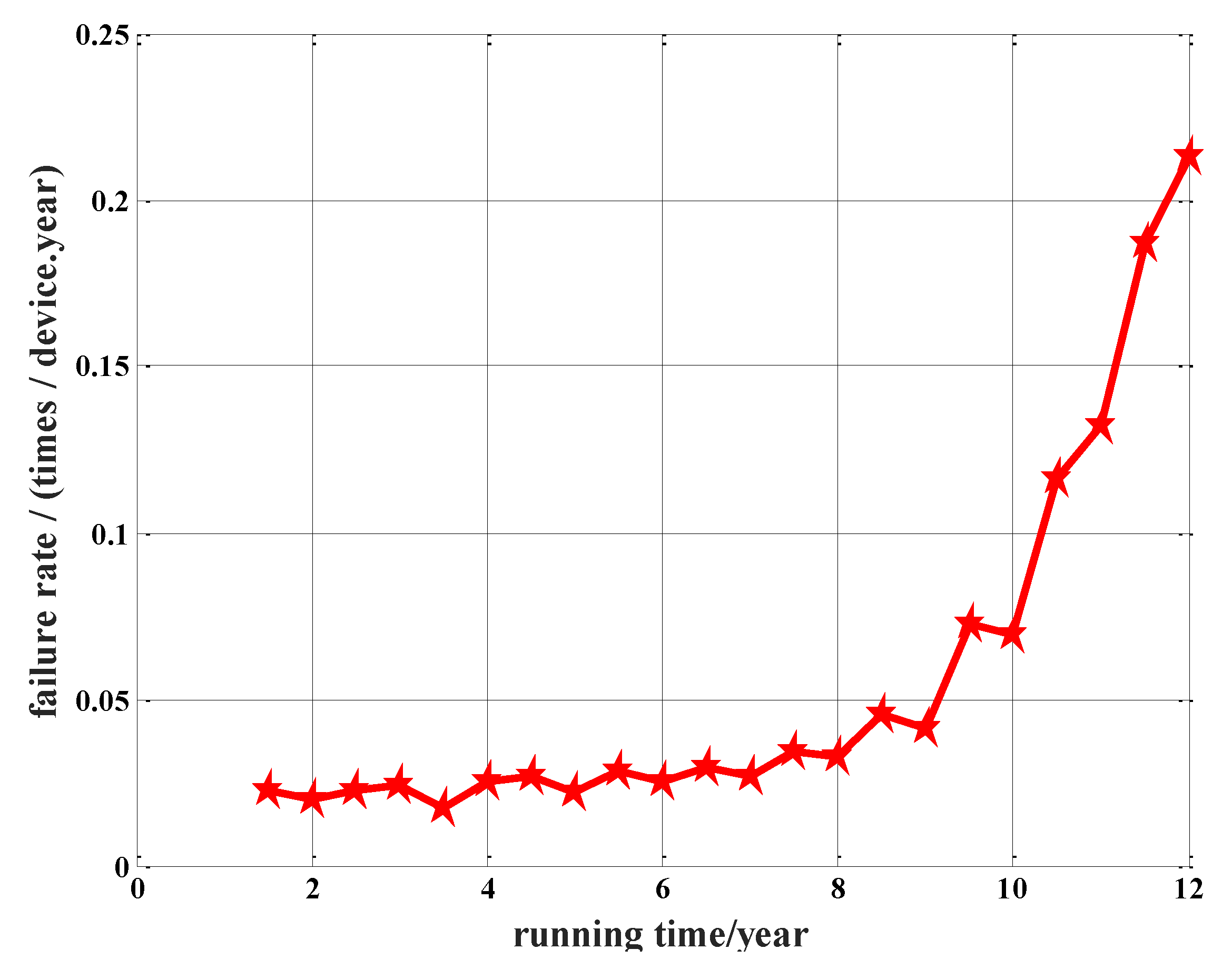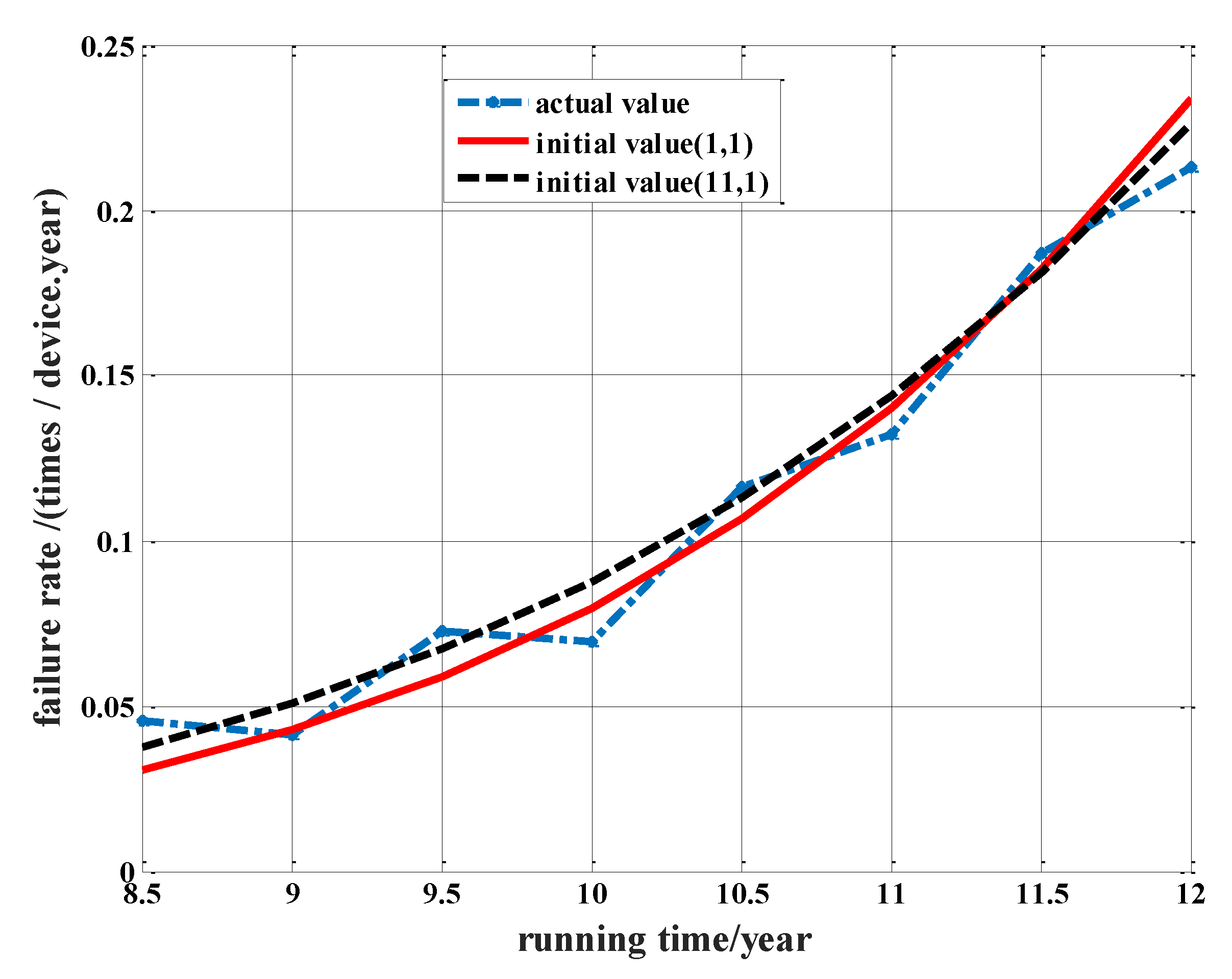At present, the research on the failure rate model is generally based on the time-failure rate model and equipment state model [
4]. The commonly used fault distribution forms for the time-failure rate model are gamma distribution, Weibull distribution, and exponential distribution [
5]. The failure rate of exponential distribution is constant and it only represents the accidental failure period. However, the failure rates of most electrical equipment follow the typical curve, namely the bathtub curve, and the bathtub curve includes the early failure period, the accidental failure period, and the three stages of loss failure period. Therefore, the exponential distribution generally is not adopted. By contrast, the Weibull distribution can match the bathtub curve well, so that it has been widely used. Nevertheless, the Weibull distribution only pays attention to the effect of equipment running enlistment age on the failure rate, which ignores the effect of some external factors such as the equipment maintenance on the equipment failure rate [
6]. Accordingly, Weibull distribution has some limitations. The equipment state model is established based on the current state of the equipment [
7], so that it does not take the effects of man-made maintenance and historical condition on the failure rate into account, and so it is difficult to predict the future failure rate. Furthermore, there are differences between countries/power companies. The British EA company and Canada Kinectrics Company focus on the health state [
8,
9]. In China, the failure rate model is an exponential function, which considers the health state as the independent variable [
10,
11,
12], and from the model, the failure rate may increase exponentially when the equipment state worsens, and the failure rate is beyond 1, so that it doesn’t conform to the actual situation. In other words, it is difficult to predict the future failure rate. Aiming at the shortcoming of the two kinds of failure rate model, a Weibull proportional hazards model (PHM), which considered the fault diagnosis value of failure time and used maximum likelihood estimation (MLE) to estimate the model parameters, has been proposed in [
13]. In [
14], the proportional covariate model (PCM) was put forward in order to solve the lack of data in the fault interval. For a repairable system, the proportional intensity model (PIM) were first proposed by Kumar [
15]. Kumar said that the fault rate in a repairable system was affected by many factors, such as operating environment, equipment materials, history operation, design features, and so on. However, the PIM always assumed that the covariates were changed only when failure/maintenance occurred, and maintained constant during the interval of failure/maintenance [
16,
17]. This assumption ignored the influence of the concomitant variables on the failure rate during the failure/maintenance interval. In [
18], the PHM was used to estimate the reliability of thin oxide dielectrics, and used the partial maximum likelihood method to estimate the parameters. In [
19], the scholars pointed out that the environmental factors influencing relay reliability mainly included temperature, humidity, vibration, and so on. Additionally, the application of Cox-proportional hazards modeling with respect to the effect of ambient temperature on electromagnetic relays was discussed.
For the above model, ignoring the whole monitoring condition values is the common point. Therefore, based on the above model, this paper analyzes the influence of variables during the failure/maintenance interval, and takes the time varying covariates in the failure/maintenance interval into account, not only the monitoring state value at failure time; then, the generalized proportional hazards model (GPHM) Weibull is built. In order to get the expressions of fault rate, the parameters of Weibull distribution are needed to estimate, which involves the solution for nonlinear equations. At present, there are many the solutions for nonlinear equations, such as the Newton method, the least square method [
20], the Marquardt method [
21], and so on. There are also many achievements on the solution of nonlinear equations, whereas they still have a fatal defect, namely, local convergence [
22]. Because the initial value must be close to the exact one, the requirement of the initial value is very harsh. In the meantime, the calculation is a large amount which brings certain challenges to the running time and space. Actually, for many nonlinear equations, the initial value is not easy to set, which brings inconvenience to the solution of nonlinear equations. Fortunately, the homotopy algorithm has a large convergence range and its requirement on the initial value is not strict, so that it brings a breakthrough to solve nonlinear equations [
23]. Howver, the Jacobi matrix of the homotopy algorithm must be reversible, otherwise the homotopy algorithm loses its significance [
24]. For solving this problem, the adjusting factor is introduced to construct an adaptive homotopy algorithm to ensure the non-singularity of the Jacobi matrix in this paper. Then, the nonlinear equation can be solved. In summary, in order to fully consider the influence of time–varying covariates in the failure/maintenance interval on the failure rate, the GPHM-Weibull is proposed, which can reflect the real-time state. MLE is used to estimate parameters of GPHM, and the adaptive homotopy algorithm is used to solve nonlinear equation, where the piecewise function expression of fault rate is solved. According to the failure rate, the operation personnel can make the differential operation strategy and realize the economic, stable operation of the power system.











